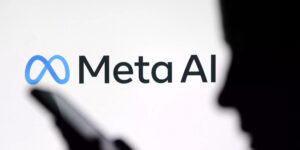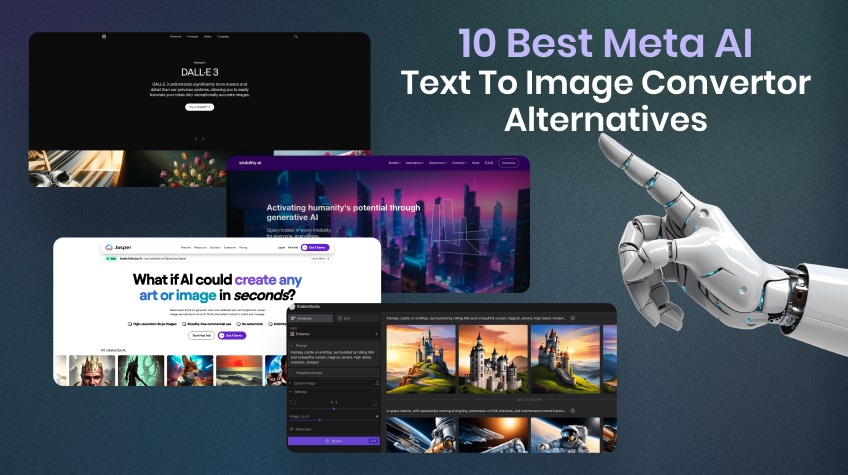
In the dynamic environment of artificial intelligence, text-to-image translation has made amazing advances, providing a view into the junction of language and visual perception. As demand for new solutions that can effortlessly transform written descriptions into vivid visual representations grows, several Meta AI image generator options arise, each seeking to push the frontiers of originality and realism.
These alternatives represent the pinnacle of cutting-edge research and technical capability, giving users the capacity to transcend traditional ways of expression and open new levels of connection. In the middle of this abundance of alternatives, people explore a rich tapestry of possibilities, looking for the ideal instrument to bring their fantasies to life.
How It Works?
Meta AI picture is at the forefront of text-to-image conversion, using a comprehensive approach supported by cutting-edge AI approaches. When a user enters text, Meta AI uses natural language processing (NLP) to interpret and extract the underlying meanings. This retrieved information serves as the basis for creating visuals. Meta AI refines and improves its output by repeatedly learning from large datasets of text-image pairings using deep neural networks, notably generative adversarial networks (GANs).
This iterative process constantly improves Meta AI’s capacity to generate visually engaging and contextually appropriate visuals that properly represent the supplied text. This combination of cutting-edge technology allows Meta AI to smoothly bridge the gap between language and images, providing consumers with an unrivaled text-to-image conversion experience.
How is it different from DALL-E 3?
DALL-E 3 and Meta AI excel in text-to-image synthesis, but their fundamental architectures and priority areas differ. DALL-E 3 favors originality and surrealistic images, while Meta AI focuses on contextual relevance and realism. DALL-E 3 uses a transformer-based architecture designed for creative outputs, often producing fanciful and surreal graphics depending on textual suggestions.
Meta AI text to image, on the other hand, uses a variety of neural network architectures, including GANs, to generate visuals that are closely related to the semantic content of the input text, with the goal of accuracy and naturalness. This feature makes Meta AI the preferable solution for jobs demanding realistic and contextually correct picture generation.
How is it different from Vertex AI?
Meta AI image and Vertex AI are both AI systems, but they are very different in what they do and how they do it. Meta AI images are very good at translating text to images. They use strong neural network designs to turn spoken words into appealing pictures that are very accurate and have lots of lifelike detail.
On the other hand, Vertex AI is a full machine learning tool that helps with building models, deploying them, and managing them all the way through. It gives you a lot of different tools and services, such as automatic machine learning, model tracking, and release workflows. Meta AI is mostly about turning words into images. Vertex AI, on the other hand, handles a wider range of machine learning needs. This makes it a flexible choice for many AI uses.
Top 10 of Meta AI Text To Image Converter Alternatives
1. DALL·E 3
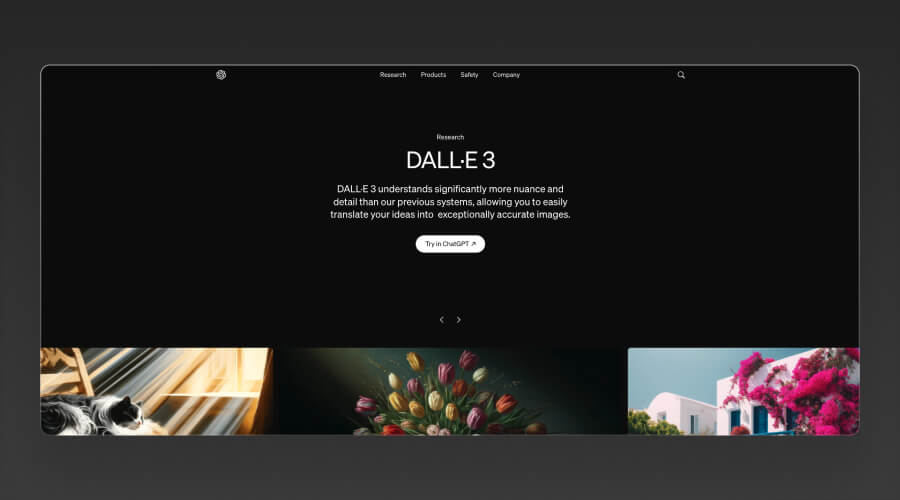
DALL·E 3 is a huge development in text-to-image creation, now completely integrated into the ChatGPT environment. DALL·E 3 improves visual prompts by using ChatGPT’s natural language comprehension.
ChatGPT allows users to provide comprehensive prompts, from basic words to intricate descriptions, enabling DALL·E 3 to generate visuals that closely match the given language. This interface improves the creative process by enabling customers to utilize ChatGPT as a brainstorming companion and prompt refiner, guaranteeing that the resulting graphics suit their precise demands.
2. Vertex AI
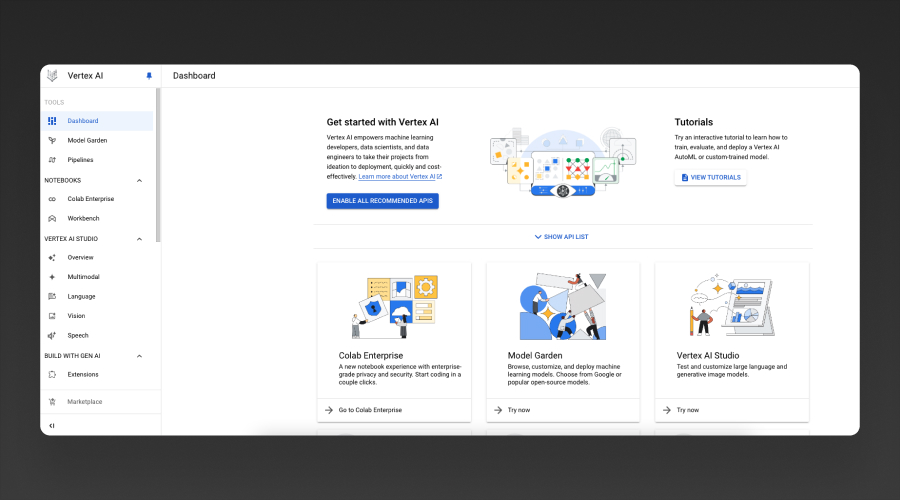
Vertex AI delivers a game-changing text-to-image generator, transforming the field of artificial intelligence. Unlike traditional methods, Vertex AI’s solution blends cutting-edge neural network topologies with powerful language processing models. Vertex AI’s seamless integration of natural language processing capabilities enables users to build pictures straight from textual descriptions with unprecedented accuracy and realism.
Vertex AI uses its extensive portfolio of machine learning tools and services to expedite the whole picture-generating process, from data preparation to model deployment. This novel technique not only facilitates the development of visual material but also creates new opportunities for creative expression and content generation in a variety of sectors and applications.
3. Stable Diffusion
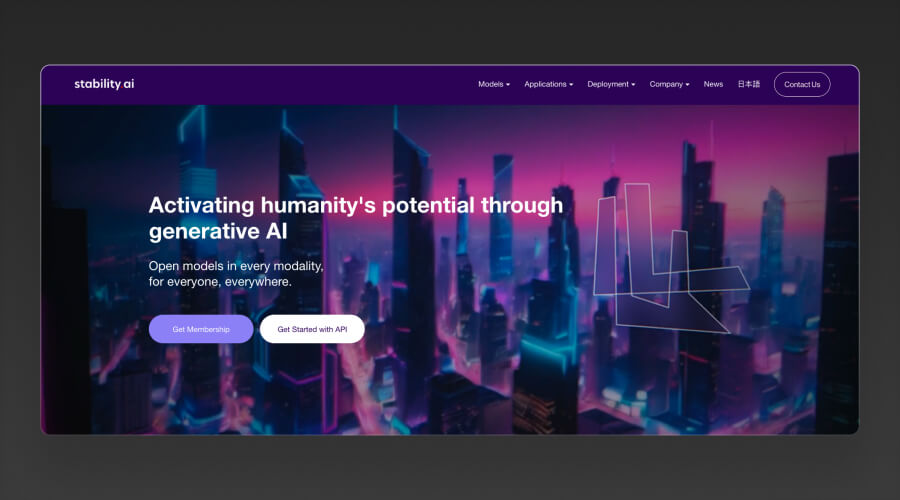
Stable Diffusion is a pioneering text to image convertor platform created by Stability AI, which is well-known for its fast and efficient image generating capabilities. This open-source program makes use of cutting-edge neural network technology, powerful algorithms, and deep learning approaches to quickly create detailed and exact photographs. Architects benefit from its adaptability, which allows them to easily integrate design principles and visual outputs.
Stable Diffusion allows architects to easily adjust their design by providing control over aspects like as lighting, textures, and materials. This tool, with its clear interface and speedy processing, allows for the smooth translation of design ideas into magnificent visual representations, transforming the creative process for architecture professionals.
4. Midjourney
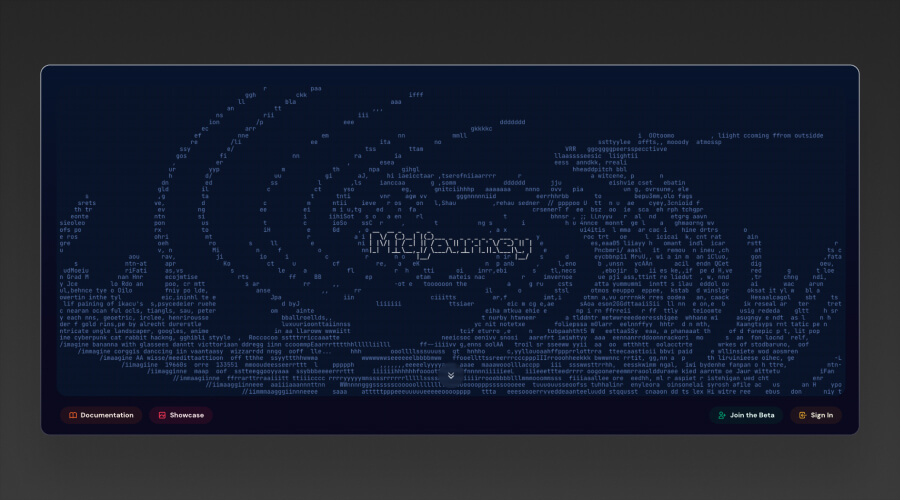
Presenting Midjourney, an amazing text-to-image convertor that is creating waves online due to its ability to create genuine worlds. Since its launch in 2022, consumers have been attracted by its hyper-realistic output. Using cutting-edge AI technologies, Midjourney provides architects and designers with an easy-to-use platform for exploring various design approaches.
Its user-friendly interface and accessible features allow creatives to experiment with a variety of design aspects, boosting inspiration and creativity. Midjourney is a big step forward in the sector, democratizing access to high-quality design tools and altering how professionals create and visualize architecture projects.
5. Jasper Art
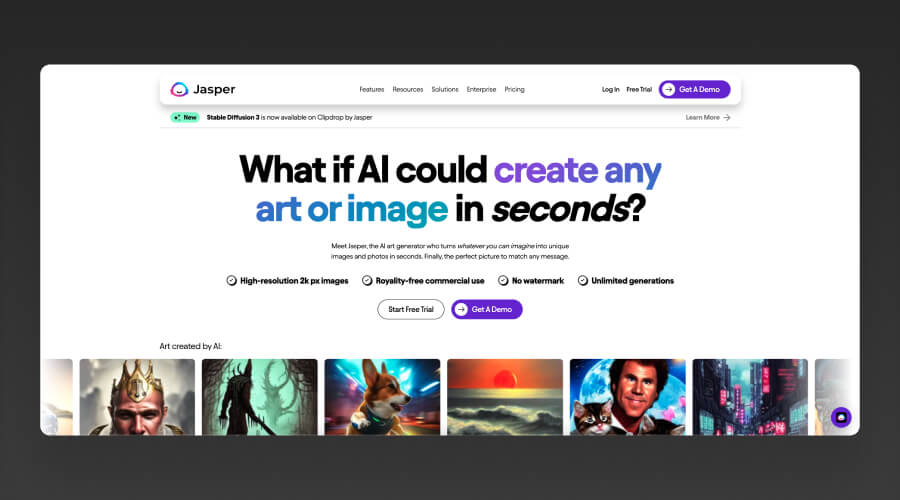
Introducing Jasper, a cutting-edge text to image convertor driven by artificial intelligence, empowering creators to set parameters and objectives for their projects. With its AI-powered algorithm, Jasper expands architects’ horizons by offering a plethora of design solutions tailored to their needs. By delving into intricate design challenges, Jasper presents diverse creative avenues, enabling architects to delve into complex structural compositions with ease.
This tool facilitates the exploration of a vast array of design potentials, equipping architects with insights to make informed decisions and unlock innovative outcomes. Jasper revolutionizes the design process, fostering imagination and propelling architectural innovation to new heights.
6. DreamStudio
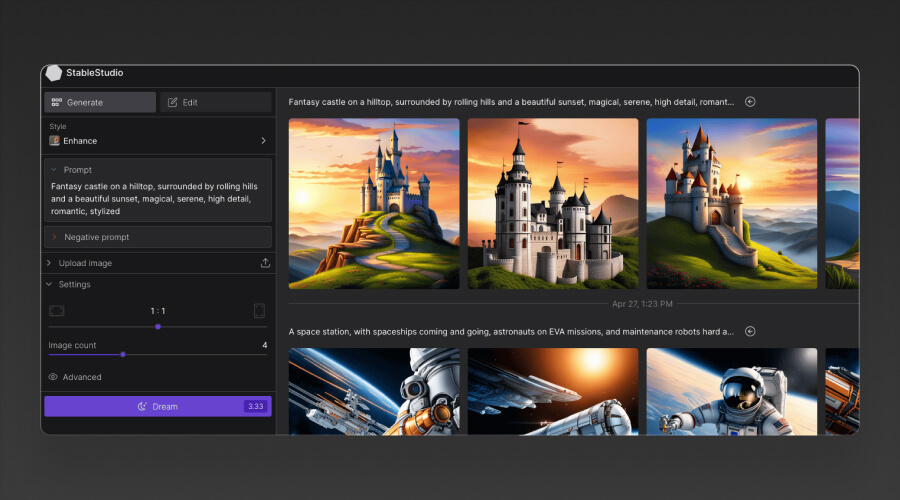
Introducing DreamStudio, an innovative web-based platform developed by Stability AI that is revolutionizing architectural visualization. Its advanced algorithm offers unprecedented customization and precision in the visualization journey. Architects have full control, tailoring lighting, angles, and materials to craft images aligned with their vision.
Moreover, DreamStudio fosters seamless collaboration, enhancing communication among stakeholders and clients. This collaborative feature streamlines the design process, promoting synergy and efficiency. By empowering architects with intuitive tools and fostering teamwork, DreamStudio propels projects towards realization with clarity and precision. DreamStudio redefines architectural visualization, paving the way for enhanced creativity and effective communication in the design realm.
7. NightCafe
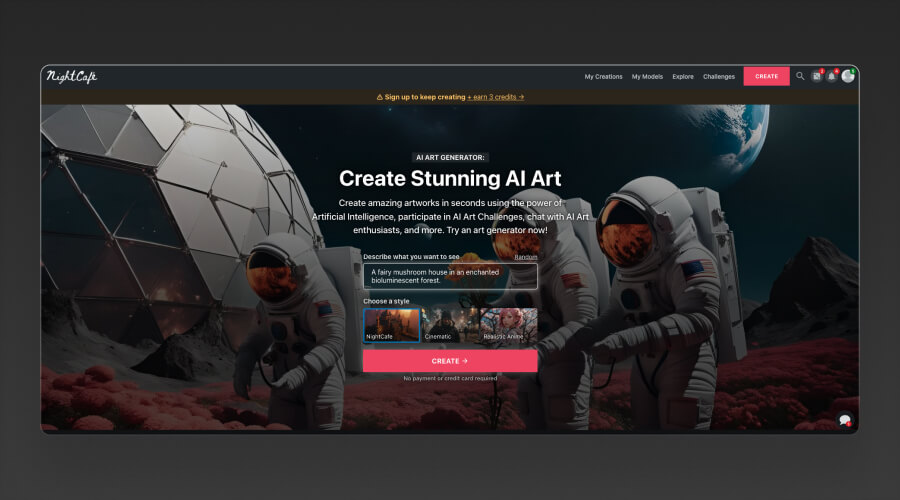
Modern AI-powered platform NightCafe AI is geared at designers and artists and provides easy-to-use tools for creating visually stunning artwork. Motivated by the legendary style of Vincent van Gogh, NightCafe AI uses deep learning algorithms to turn common photos into captivating masterpieces, evoking the artist’s well-known creations.
It’s intuitive design and adjustable features allow artists to easily play around with different creative components, such as color schemes and brushstrokes, to produce visually arresting compositions. Creators may depend on NightCafe AI to open new artistic expression channels and take their work to previously unheard-of heights in the digital art scene, whether they are looking for inspiration or honing their skills.
8. Starry AI
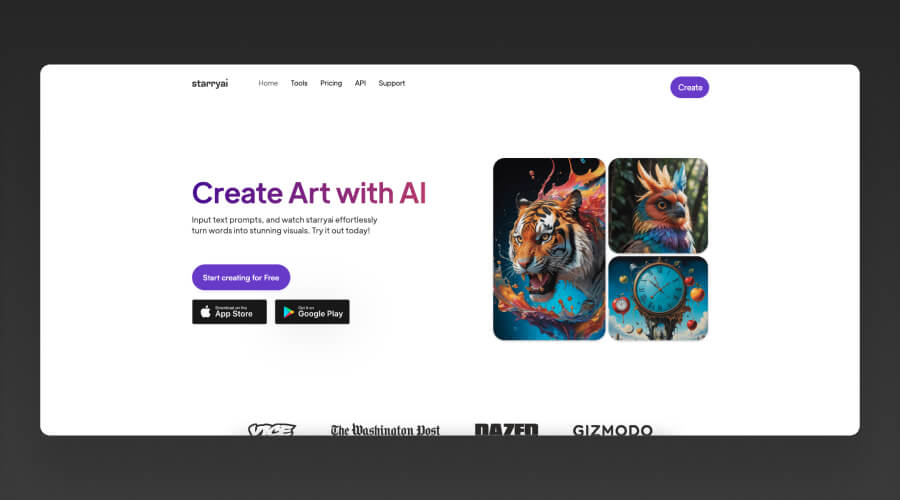
Starry AI is a straightforward and user-friendly visual recognition system creators utilize to generate conceptual and abstract images of fictional realms. It empowers users to craft personalized final renderings with the assistance of a fine-grained tool, which can influence the architectural design or ignite inspiration for a building’s theme.
Its continuous generation of novel and distinctive images supports architects in staying abreast of the latest design trends and styles, ensuring they remain ahead of the curve in terms of innovation and creativity.
9. DreamBooth AI
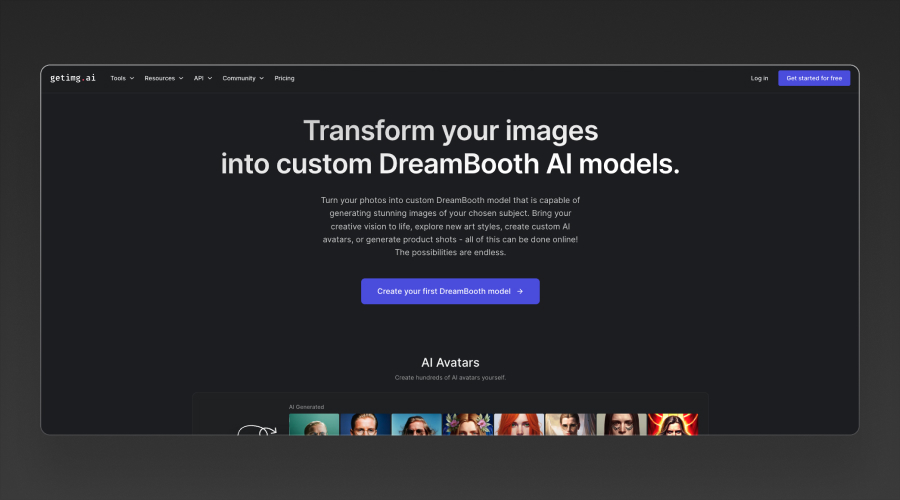
DreamBooth AI revolutionizes the architectural design process by harnessing the power of artificial intelligence to produce stunning visualizations. Creators can input parameters such as form, texture, and color, allowing the AI to generate a plethora of abstract images tailored to their specifications. These generated designs serve as inspiration, aiding architects in exploring diverse possibilities and refining their vision.
By streamlining the early stages of design, DreamBooth AI enhances creativity and efficiency, empowering architects to make informed decisions and ultimately achieve innovative and visually striking architectural solutions. With its intuitive interface and versatile output, DreamBooth AI redefines the boundaries of architectural design exploration.
10. DeepDream
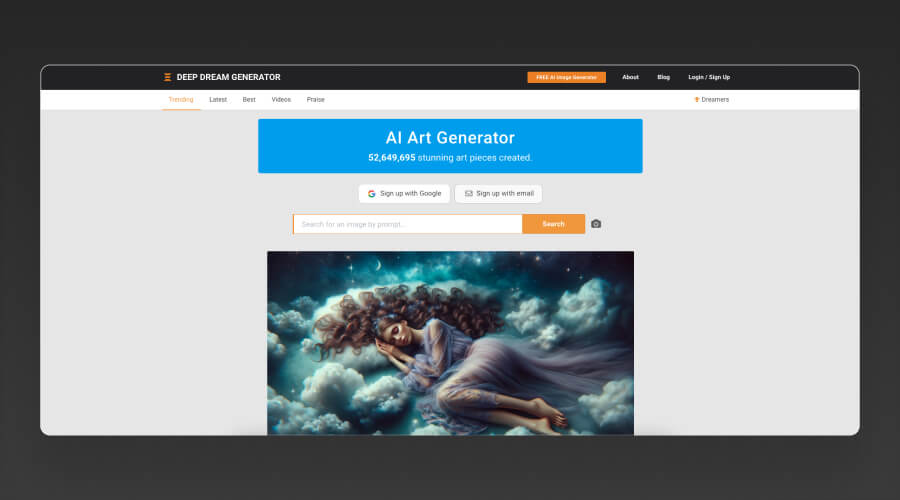
DeepDream is a new project by Google that uses convolutional neural networks (CNNs) to turn pictures into complex and fascinating visual arrangements. DeepDream creates interesting results by increasing patterns found in a picture, based on settings set by the user. During the early stages of a project, architects use this cutting-edge tool to try out new design ideas and spark their creativity.
The way DeepDream can reveal secret patterns and colors gives builders a fresh look at things, which can lead to new ideas and push the limits of normal design. Because DeepDream is open source and uses powerful neural network methods, it continues to give builders the tools they need to imagine and create innovative building solutions.
Also Read: Best AI Image Generator You Need to Create AI Art from Text
In conclusion, while Meta AI image generator stands as a notable option, several alternatives offer compelling features and functionalities for diverse user needs. Each platform possesses its unique strengths, whether it’s advanced customization options, seamless integration with existing workflows, or superior image quality.
Professionals seeking innovative solutions can explore these alternatives to enhance their design processes, foster creativity, and streamline project development. By leveraging the capabilities of these top alternatives, creators can unlock new possibilities in visualizing and conceptualizing their designs, ultimately shaping a more vibrant and dynamic future for architectural innovation.

